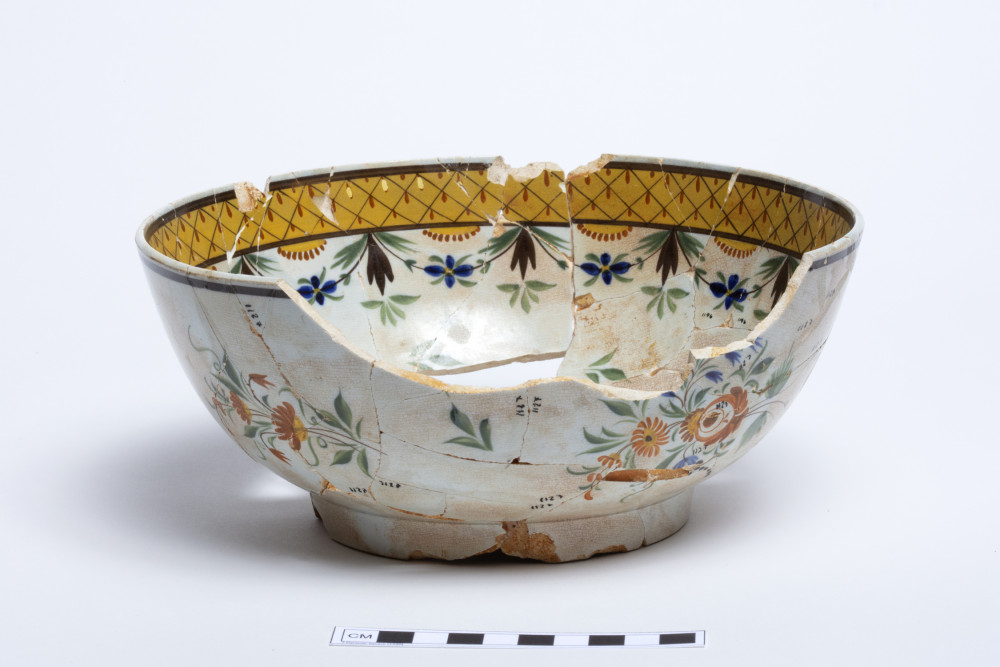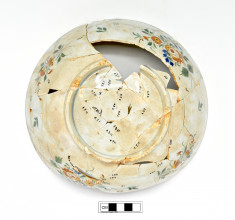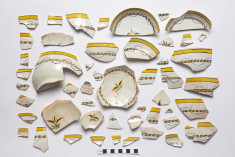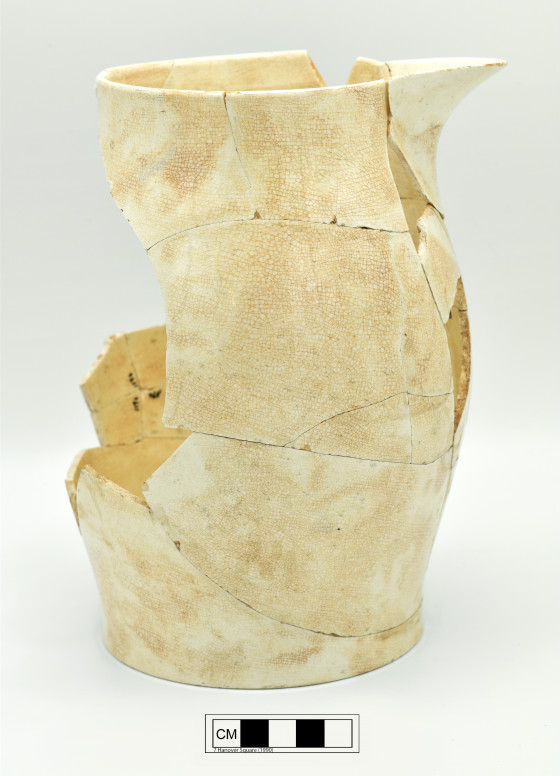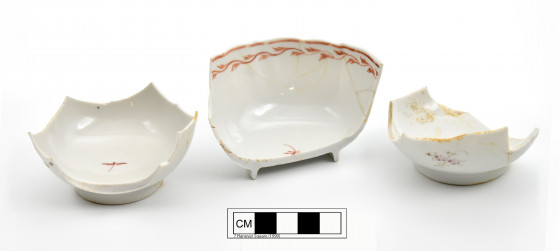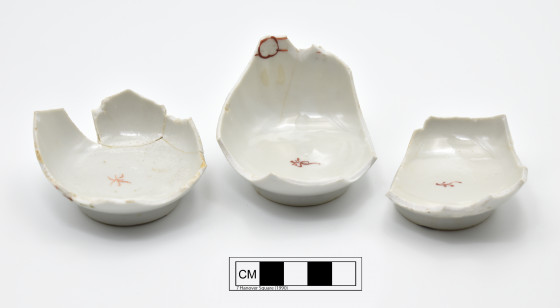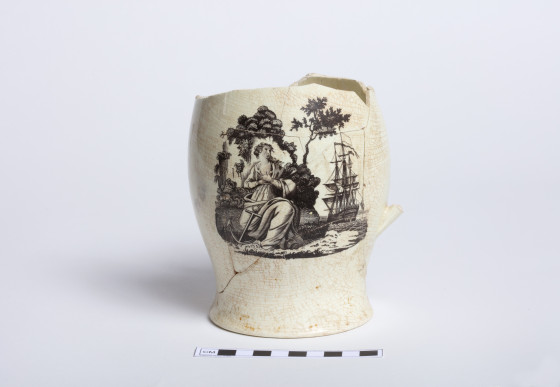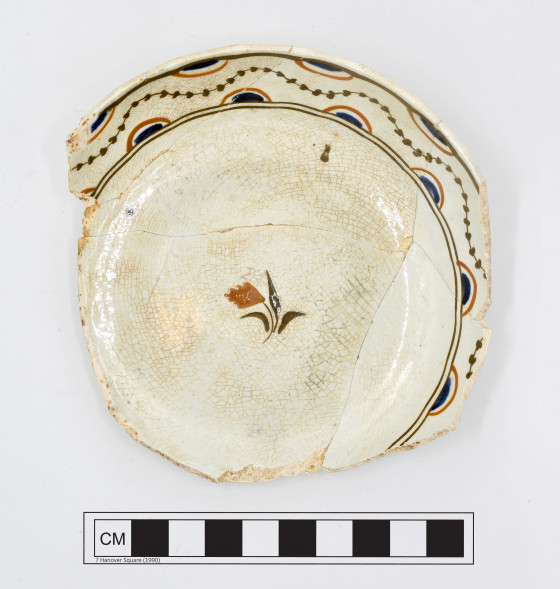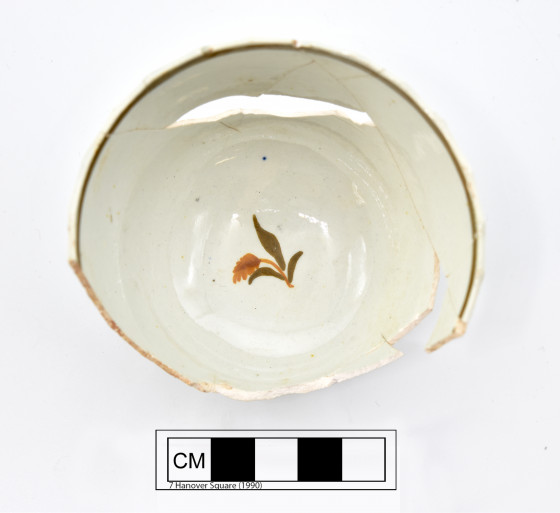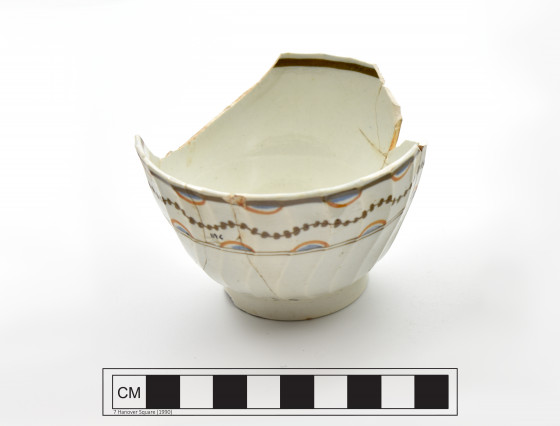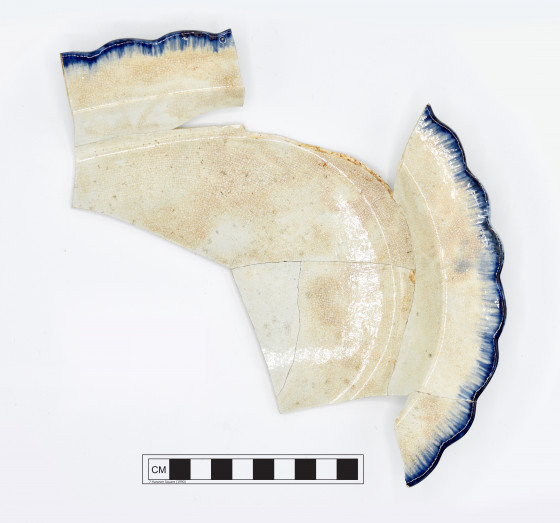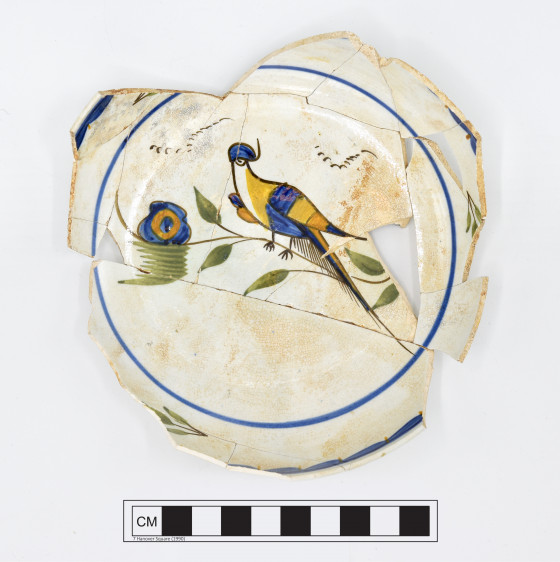Look at the swirling floral sprays on this bowl: do you feel yourself getting tipsy? This bowl was intended to be filled—and emptied—of punch at lively gatherings of elite male merchants in New York City. Dating from between 1795 to 1815, this type of ceramic is known as pearlware, an English innovation of the late eighteenth century in the continued attempts to mimic the bluish whiteness of Chinese porcelain. Painted underneath a cobalt glaze in a vibrant array of metal oxides, the stylized peonies, daisies, and roses seem to dance beneath the shimmering surface. Unfortunately, this bowl was never drunk from in its lifetime; it and thousands other vessels were discarded—already broken—in the backyard of a ceramics shop at 7 Hanover Square. Close to the East River, this shop was in a prime location to trade in the latest fashionable ceramics coming from Britain. Did the fragile cargo break on the trans-Atlantic voyage? Was it the bumpy roads of New York that turned the treasure into trash? In any case, the fate of this punch bowl—thrown away with the leftovers of the shopworkers’ lunches—reminds us that trade is always a risky business. (Written by Robert Hewis, for a Bard Graduate Center class project, 2023).
The nine-inch diameter punch bowl consists of seventy-one mended rim, body, base, and footring sherds. A brown tri-lobed leaf painter's mark is located on the exterior surface of the base. This is an example of pearlware design #80 in Pipe's 2003 guide to patterns from the 7 Hanover Ceramic Shop deposit. Additional base, body, and rim fragments featuring this design are also present in the Ceramic Shop deposit.
-
Object number
783, 1127, 1196
-
Date made
1795 - 1815
-
Dimensions
Foot Diameter 4.75 inches
Rim Diameter 9 inches
Height 3.75 inches
-
Decoration
-
Color
Polychrome
Earth Tone Colors
-
Animals/objects
Bowl, Punch
-
Patterns
Floral
-
Category
-
Class
Ceramic
-
Functions
-
Material
-
Context
Lot 27* Ceramic Shop Deposit: Undisturbed Ceramic Deposit (Red-Brown Sand with Ceramics) (624.1196)
-
Forms
Base/Body/Rim
Footring
-
Ware types
Pearlware
-
Techniques
Press Molded

